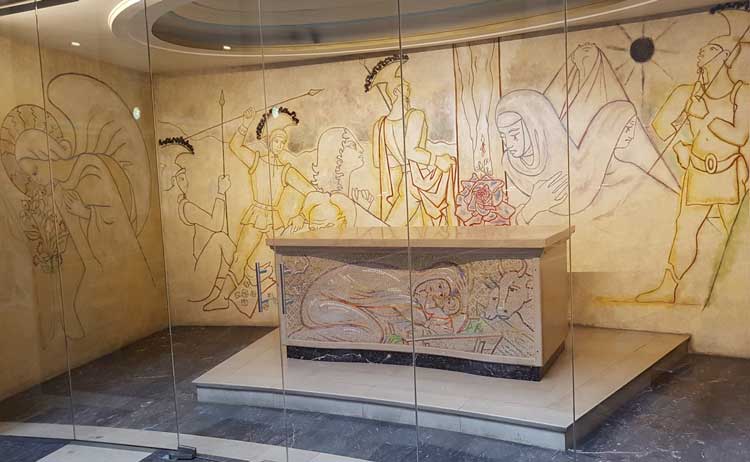
The delightful church of Notre Dame de France is home to a lovely set of murals by French artist, writer, poet and film maker Jean Cocteau (1889 - 1963).
The church itself is a true haven, located just around the corner from the busy and bustling Leicester Square; and the moment you pass beneath the representation of Our Lady of Mercy, that looks down upon visitors from over the church's main entrance on Leicester Place - and which was carved in 1953 by French sculptor Georges-Laurent Saupique (1889-1961) - an aura of tranquil serenity engulfs you, and the stresses and strains of the modern age simply melt away.
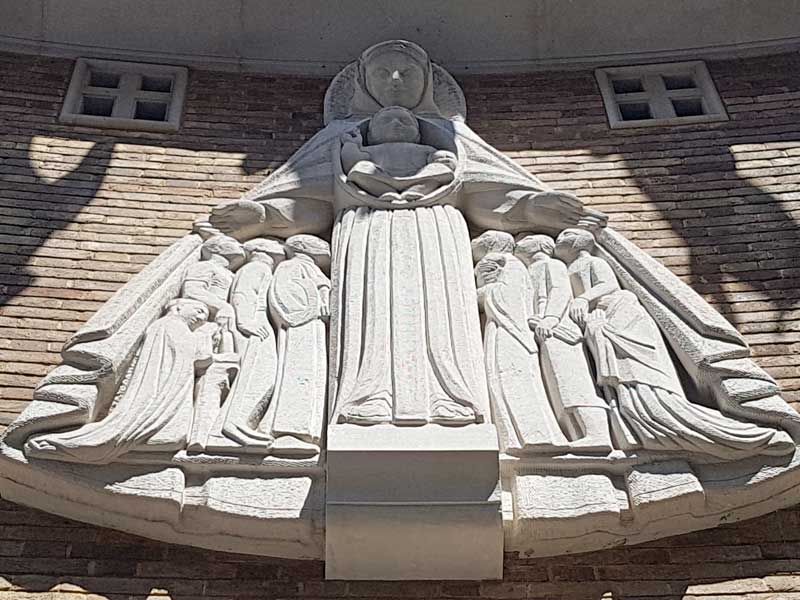
The story of the church begins in 1861, when the area was home to a large French population and the Marist Fathers established a mission on the site of the present church to cater to the area's spiritual needs.
They actually took over an existing building, "Burford's Panorama " an early tourist attraction that dated from the early 1800s.
Father Charles Faure, the leader of the Marist mission, commissioned French architect Louis-Auguste Boileau, an early promoter of cast iron architecture, to shape the "Panorama" into a church, and he did so by retaining the rotunda of the previous attraction, which gave the completed building the circular shape that it still retains today. Upon its consecration in 1861, it had the distinction of being the first cast-iron church in London.
Sadly, the church suffered a huge amount of damage during the Battle of Britain, in 1940, and, following the War, it had to be all but rebuilt.
This was done with the support of the French Ambassador, Jean Chauvel, and the French cultural attaché René Varin.
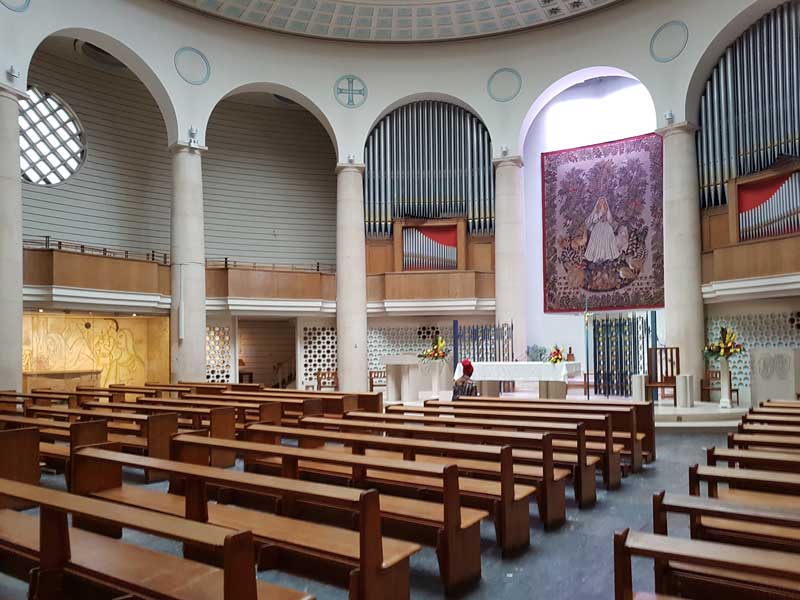
Between 1953 and 1960, René Varin approached several eminent French artists and asked them to contribute their talents in order to decorate the interior of the church in such a way as to create a sacred space that would honour France.
One artist who was happy to oblige was Dom Robert, a Benedictine monk of the En Calcat abbey, who created the beautiful Aubusson tapestry, which can be seen over the altar, and which depicts Paradise on Earth, with a reference to the Creation and to Wisdom. It is truly exquisite.
But the church also houses another artistic surprise that, if you ask me, is one of London's best kept secrets.
On the three walls of the Lady Chapel, you will find three murals that depict scenes in the life of the Blessed Virgin, Mary.
They were painted by French artist Jean Cocteau in 1959, and they are the only works of their kind outside of France.
On the wall to the left of the altar Cocteau has depicted the Annunciation showing the angel Gabriel appearing to the Virgin Mary to inform her that she is to conceive and become the mother of Jesus.
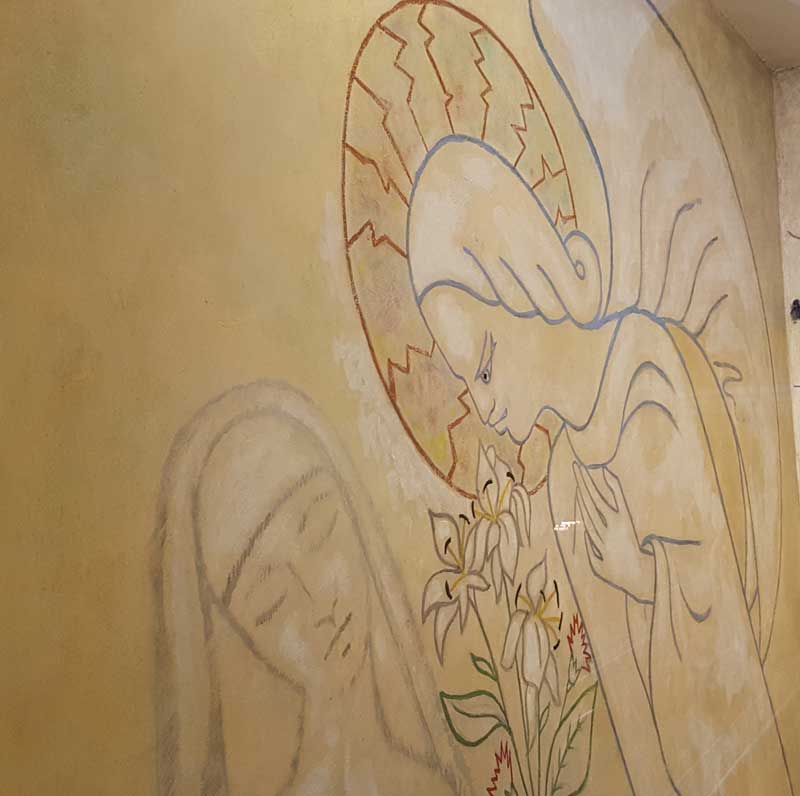
The mural that adorns the central wall shows the crucifixion, and is notable in that it excludes Jesus's head, arms, torso and legs.
In fact, only his feet are visible; from the puncture wounds of which flow jewel-like drops of blood.
Mary is shown alongside his feet, with a similar jewel-like tear streaming from her eye; the repeated motif emphasizing how she is sharing in her son's suffering and sacrifice.
Two other female figures are shown at the foot of the cross. Mary Magdalene, turns away from the agonizing scene, unable to watch the suffering. The third figure, looks up to heaven, seemingly imploring God to come down and save his son.
Cocteau unites the three females in their grief by having their veils merge together.
The sun can be seen to the right of the three female figures as you look at them, but it has turned black, a reference to the eclipse that the New Testament records as having taken place at the time of the crucifixion.
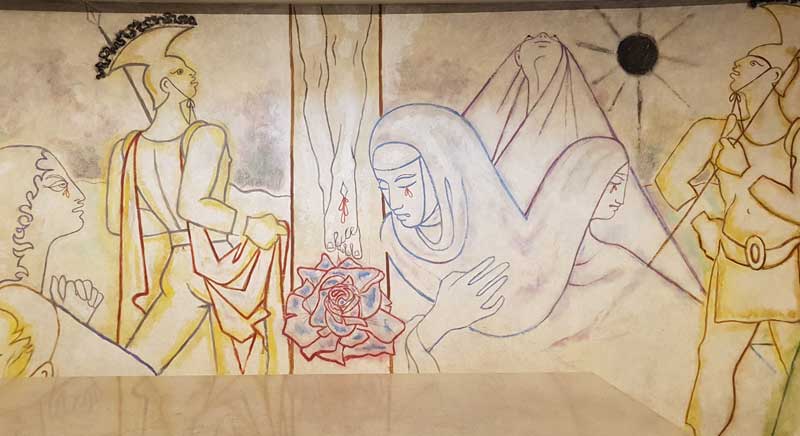
To the left, two Roman soldiers are rolling dice to see who will get Jesus's garments, whilst John clasps his hands in anguished prayer, another jewel-like tear sparkling from his eye.
Beneath Jean Cocteau has painted himself into the grouping. His face looks away from grouping, and he wears an expression that is difficult to read - suggesting either puzzlement or sorrow, or, perhaps a combination of the two.
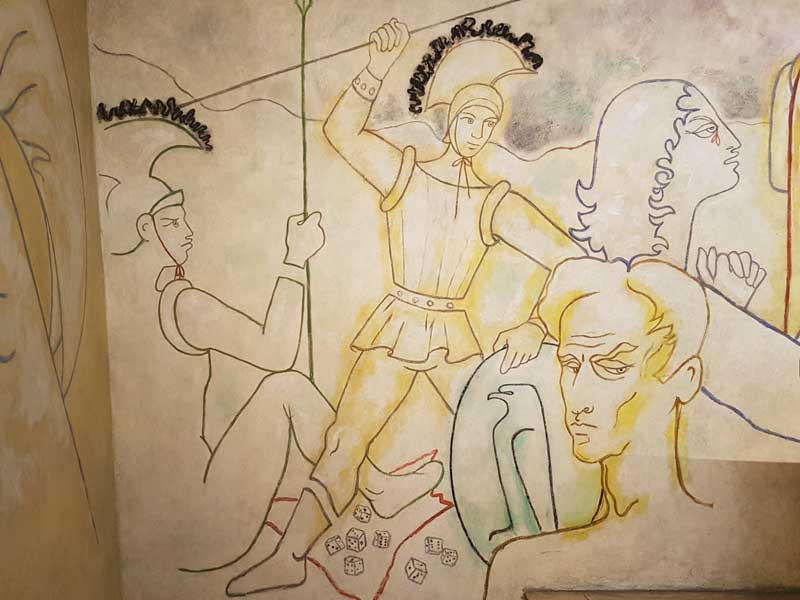
To the right of the scene is a strange figure that has a fish-shaped eye, that might be Jesus himself observing the sadness of the scene, or which might be another apostle observing the death of his master whom he has abandoned.
Beneath this figure is Cocteau's signature and the year 1960.
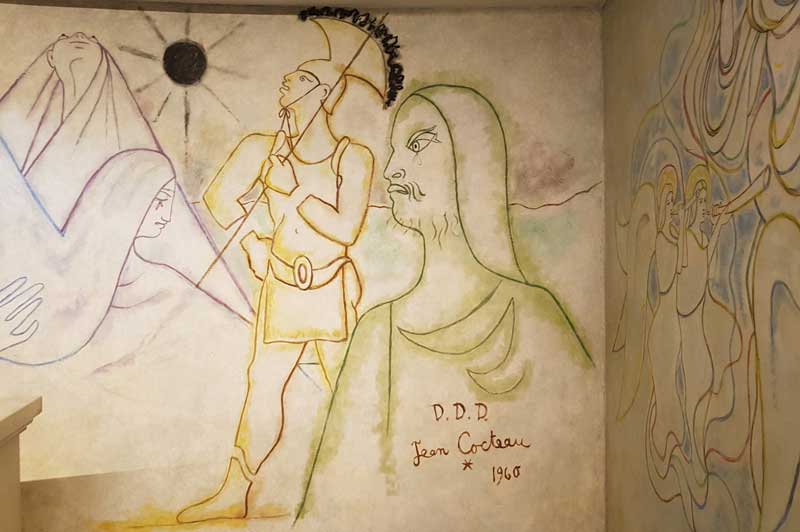
The final wall, to the right, shows the Assumption of Mary, as she is taken up into heaven, body and soul, accompanied by angelic fanfare.
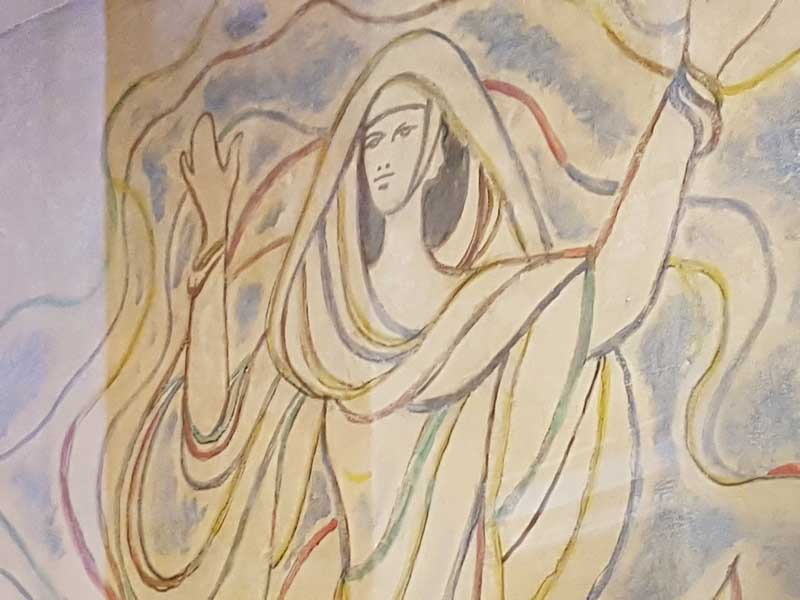
Cocteau actually painted the murals between November 3rd and 11th 1959.
At the time he was hugely popular and he had to be protected from over inquisitive journalists as he arrived at the church to begin work at 10am each day.
He would always begin by lighting a candle before the statue of Our Lady of Lourde's; and, having done so, he would set to work.
Witnesses described hearing him talk to his subjects as he painted them, engaging, as the notice in the church so wonderfully puts it, "...in a real dialogue with the wall of the chapel."
Indeed, when he had completed his task, he lamented that he was truly sorry to leave behind the chapel wall which, he observed, " has drawn me into another world."